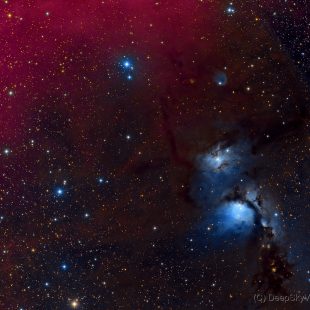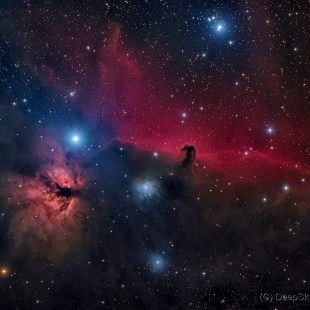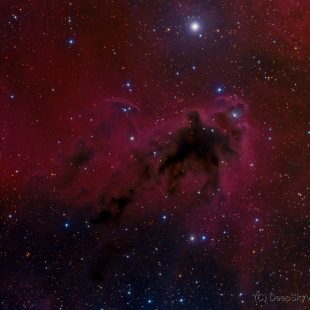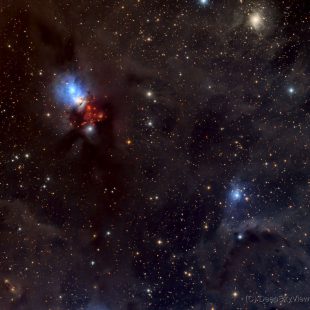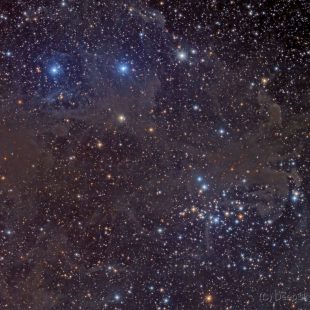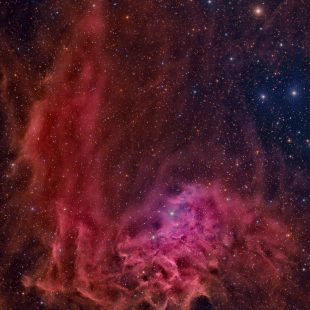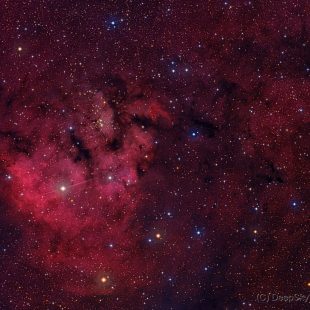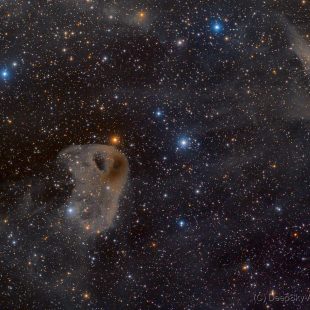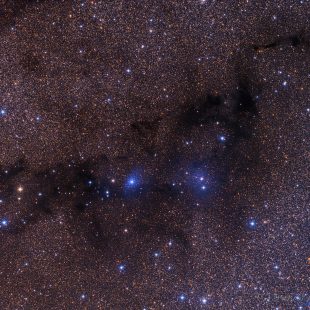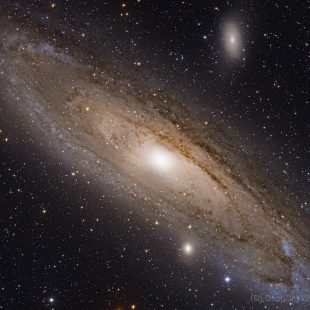M78 – Reflection Nebula in Orion
M78 is sometimes forgotten reflection nebula in the constellation of Orion and part of the Orion molecular cloud complex. It includes NGC 2064, NGC 2067 and NGC 2071 and other nebulae. This image is an LRGB composite with more than 15 hours of data taken at Deep Sky West. Again my first attempt at processing […]
